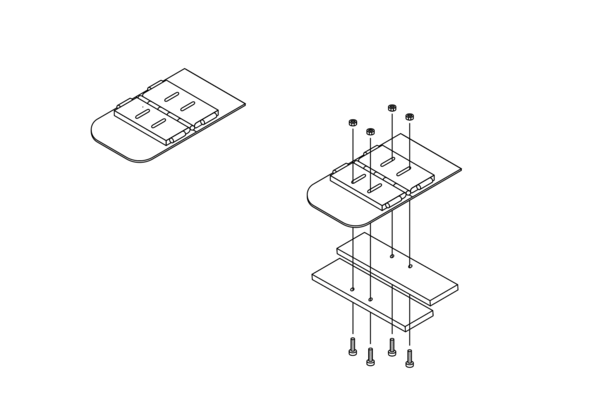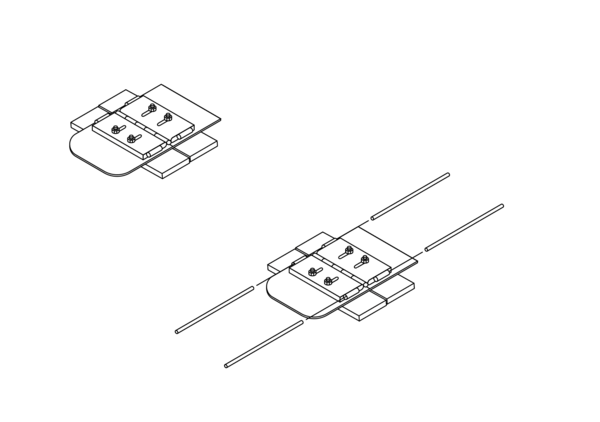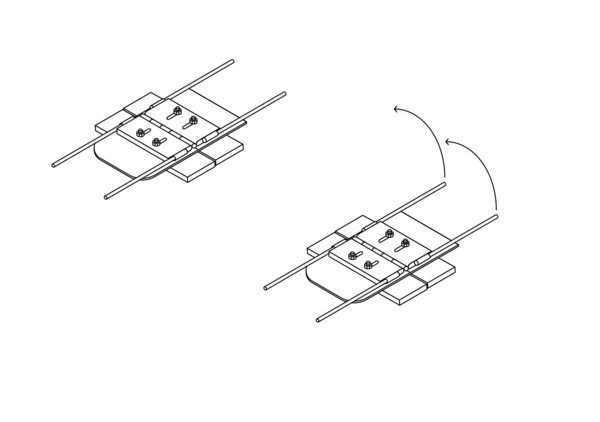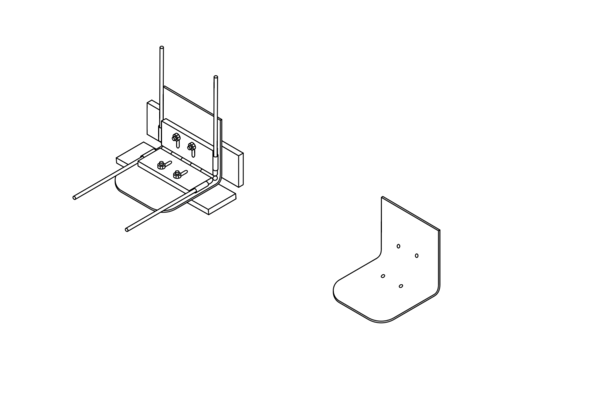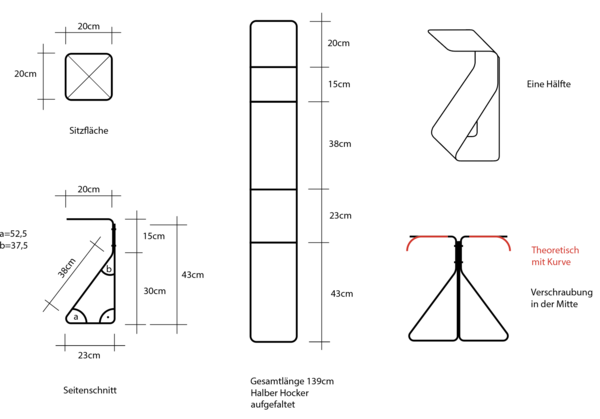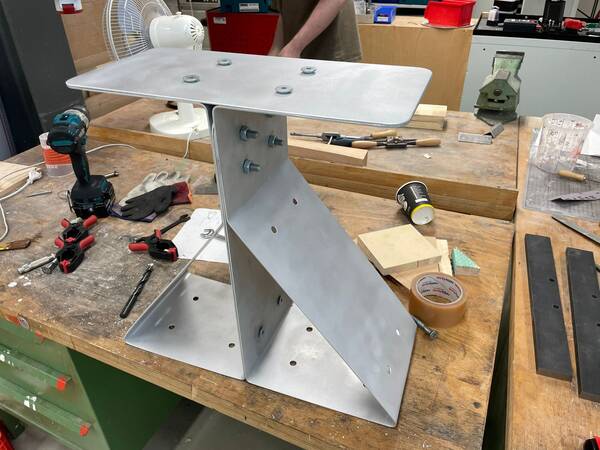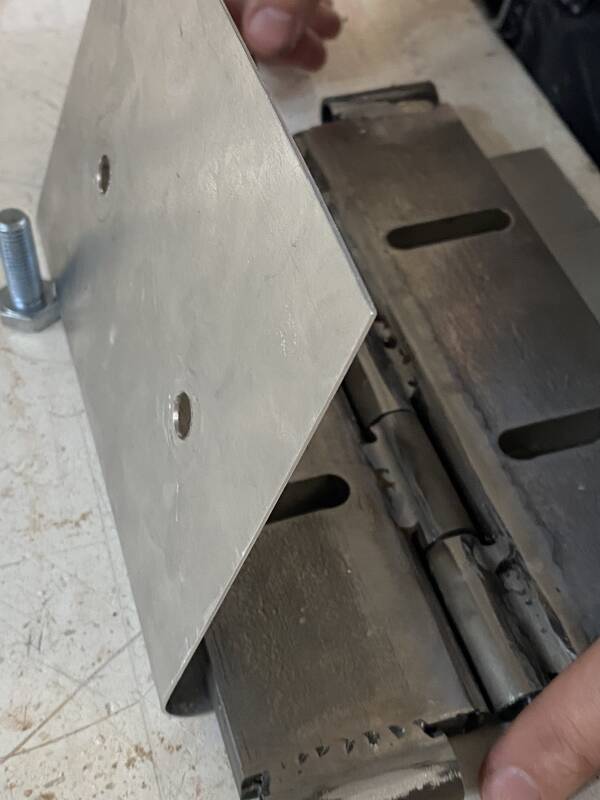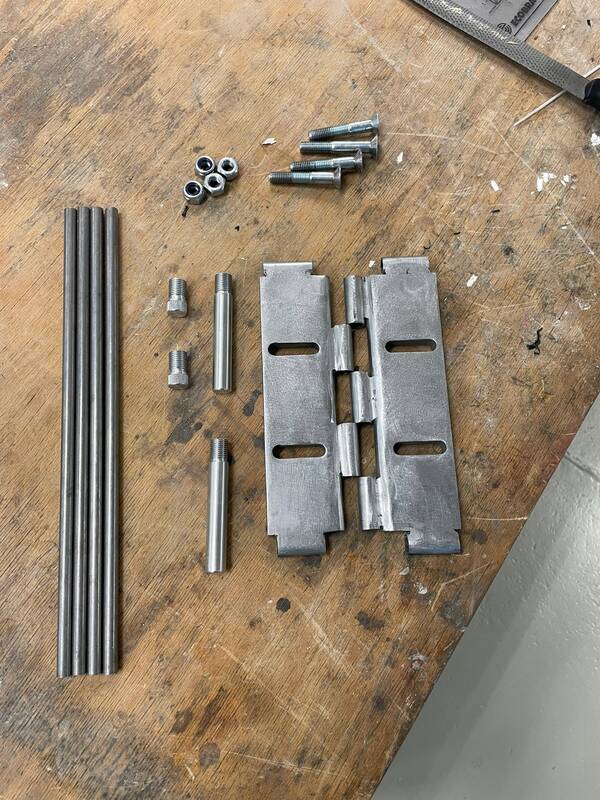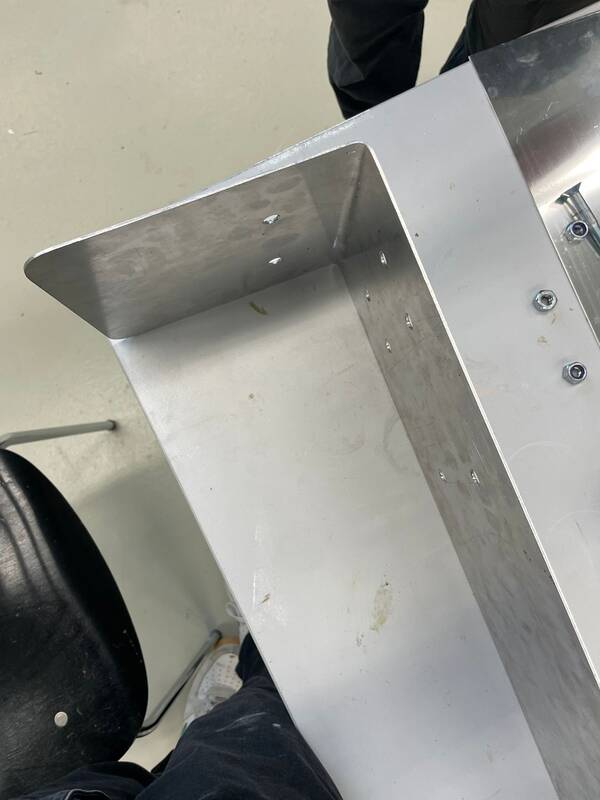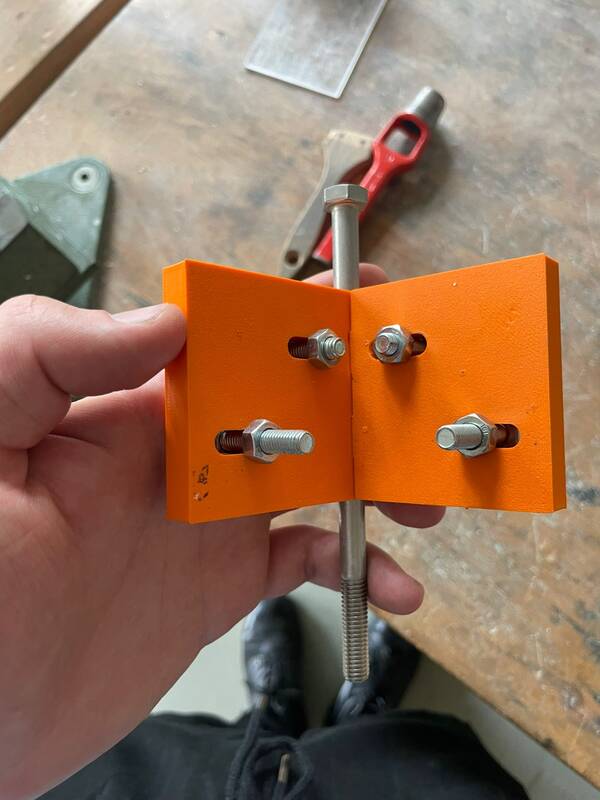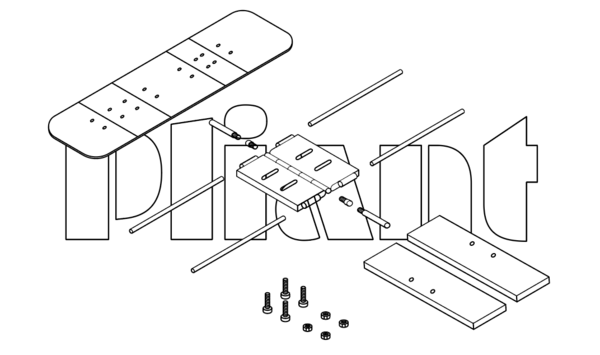 Our inspiration for the furniture folder came from an unexpected,
Our inspiration for the furniture folder came from an unexpected,
almost trivial everyday object: the laundry folder.
This simple plastic tool, often found in infomercials or organizing
enthusiast’s homes, is designed for one very specific task to
fold a T-shirt into a perfectly rectangular shape in just a few swift
movements. It’s a device that operates somewhere between precision
and absurdity. After all, do we really need a tool to fold
clothes? Probably not. But there’s something undeniably satisfying
about the choreography of its hinged panels and the consistent
outcome it produces: fabric transformed into form, quickly and effortlessly.
This choreography, this quiet mechanical dance of folding, became
the starting point for our own tool.
We took this idea, a folding frame that allows you to bring soft
material into structured shape and applied it to an entirely
different context: aluminum sheets, used to create furniture objects
such as stools, trays, or sculptural containers. Just like with
the laundry folder, the user places a sheet of material onto the surface
of our folding tool. A few precise movements follow: hinges are
closed, edges are brought up, angles are locked in. What begins as
a flat plane is transformed into a spatial object.\\
What intrigued us most was not just the function of the original folder,
but its logic: A frame that acts as a guide. A set of predefined
movements. A tool that enables shape through repetition and gesture.
Our “furniture folder” translates this logic into a new material language.
Instead of cotton, we fold metal. Instead of tidying up, we build.
The tool itself becomes a silent partner in the act of making rigid, yet
flexible enough to adapt. It's a modular hinge-based frame that allows
for different folding geometries and compositions. The result is not a mass-
produced piece of furniture, but a crafted object—shaped by hand, guided
by structure, and held together by the memory of a fold.
